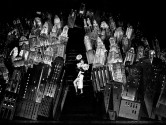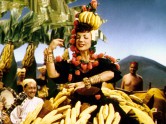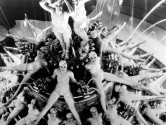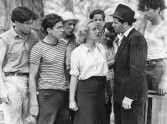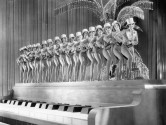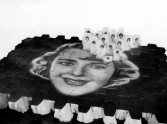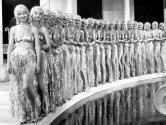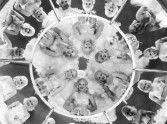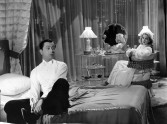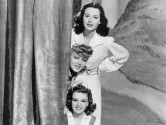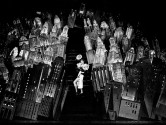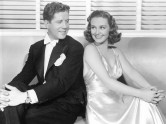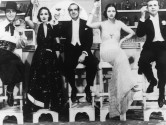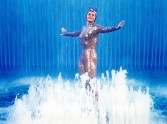
Gold Diggers of 1933
Recently Restored
With Warren William, Joan Blondell, Aline MacMahon.
US, 1933, 35mm, black & white, 98 min.
Print source: Library of Congress
Just rounding the corner of 42nd Street, Gold Diggers of 1933 opens with dancers-as-coins in the catchy song-and-dance routine “We’re in the Money,” a playful number that is ironically cut short due to the arrival of debt collectors. An apt introduction to the preoccupations in Berkeley’s Warner Brothers pictures, this aborted snippet extravagantly conflates sex and money and confusingly mingles opulent fantasy with dire circumstance. In reality, the down-and-out victims of the Depression were not giving up film-going, and particularly not these stories of sweet success drizzled in comedy, Berkeley’s hypnotic magic and behind-the-scenes theatrics. Dick Powell and Ruby Keeler return as an adorable couple with Warren William and Joan Blondell forming the more complicated, duplicitous pair. All are comically caught up in one case of mistaken identity after another, with both real and pretend gold diggers teasing the confused men while a secret savior lurks in the mix. For his part, Berkeley literally strips away at least one illusion: Powell and Keeler’s wholesome façade evaporates with the marvelously provocative “Pettin’ in the Park” dance sequence. Meanwhile, he continues to overwhelm the plot with “Shadow Waltz,” first by captivating the senses with descending layers of twirling, spiraling dresses and then electrifying them with a neon violin routine. The final emotional twist is Berkeley’s reverent social statement featuring the line “Remember my forgotten man/You put a rifle in his hand.” Rows of bedraggled, wounded soldiers transform into soup-line patrons, and the giddiness is finally brought back to Earth with Metropolis-esque arcs of silhouetted, endlessly marching men, underpinning the dream machine.

